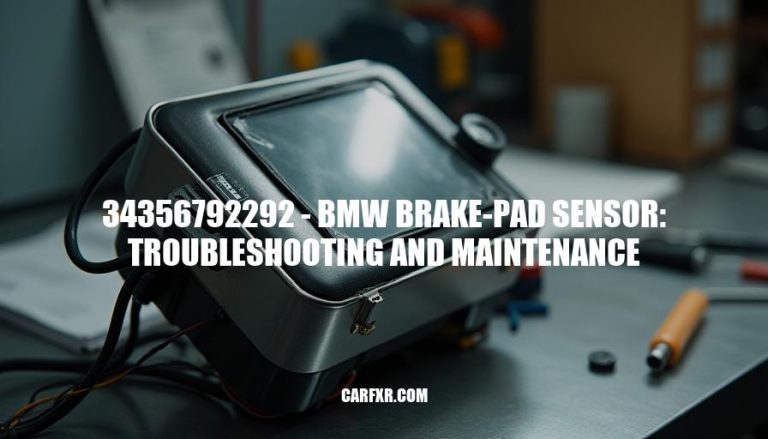
The BMW Part brake-pad sensor is really important for keeping you safe while driving. It checks how worn out your brake pads are and tells you when they need to be replaced. This helps prevent your brakes from failing, which can make your car stop working properly.
By taking care of this, you’ll have a smoother ride and less chance of something going wrong on the road.
New brake pad sensor (Part number: 34356792292)
Flat-head screwdriver
Socket wrench set
Torque wrench
Jack and jack stands
Tire chocks
Safety glasses
Gloves
2012-2023 BMW 328i
2013-2016 BMW 328i xDrive
2012-2015 BMW 335i
2015-2018 BMW M3
2014-2016 BMW 228i Convertible
2015-2016 BMW 228i xDrive Convertible
2017-2021 BMW 230i Convertible
2017-2021 BMW 230i xDrive Convertible
2013-2018 BMW 320i Sedan
2013-2018 BMW 320i xDrive Sedan
2014-2018 BMW 328d Sedan
2014-2018 BMW 328d xDrive Sedan
2012-2016 BMW 328i N20 Engine (F30), N26 Engine (F30), Sedan N20 Engine (F30), Sedan N26 Engine (F30), Wagon (F31)
2013-2015 BMW 328i GT F34
Safety First: Park the vehicle on a flat surface, engage the parking brake, and place tire chocks around the wheels.
Lift the Vehicle: Use a jack to lift the rear of the vehicle and secure it with jack stands.
Remove the Wheel: Remove the rear wheel on the side where the brake pad sensor needs replacement.
Locate the Sensor: Find the brake pad wear sensor attached to the brake pad on the brake caliper.
Remove the Old Sensor: Use a flat-head screwdriver to carefully pry out the old sensor from its position.
Disconnect the Sensor: Unhook the sensor wire from the strut bracket by pulling it out.
Disconnect the Connector: Open the black box mounted on the wheel well and pull the connector out.
Install the New Sensor: Connect the new sensor wire to the strut bracket and position it on the brake pad.
Reconnect the Connector: Plug the new sensor connector back into the black box.
Reinstall the Wheel: Put the wheel back on and tighten the lug nuts using a socket wrench.
Lower the Vehicle: Carefully lower the vehicle back to the ground using the jack.
Reset the Brake Light: Turn the ignition on (but do not start the car), press and hold the reset button on the side of the dashboard until the service menu appears. Press the reset button several times to see the front or rear brakes symbol, then hold the reset button with the brake symbol until you see the word RESET. Release the button and press it again for about 5 seconds to reset the brake light.
Ensure all connections are secure and the brake light is reset.
Test drive the vehicle to confirm the sensor is functioning correctly.
I hope this helps!
The BMW Part brake-pad sensor is an essential component for maintaining safe driving conditions. Its primary function is to monitor the wear of your brake pads, alerting you when they need replacement to prevent brake failure. This critical system ensures that your vehicle’s brakes operate optimally, reducing the risk of accidents and costly repairs.


